Affiliate link disclosure – The BMW Repair Guide uses affiliate links in their site. For more information on affiliate links, please click here.
- Repair Summary
- Repair Difficulty and Cost
- Repair Video
- Parts Diagram
- Required Parts List
- Repair Steps
Repair Summary
This article gives detailed instructions on replacing the fuel pump and fuel filter in a BMW E9x vehicle. Even though we used a 2011 335i to perform this repair, this article can be applied to any 2007-2013 3 series vehicle with minor modifications to the repair steps.
See all vehicles this article applies to
E90 3 Series M3
E90 3 Series 318d
E90 3 Series 335i
E90 3 Series 335xi
E90 3 Series 335d
E90 3 Series 330xd
E90 3 Series 330xi
E90 3 Series 330i
E90 3 Series 330d
E90 3 Series 328xi
E90 3 Series 328i
E90 3 Series 325xi
E90 3 Series 325i
E90 3 Series 323i
E90 3 Series 325d
E90 3 Series 320i
E90 3 Series 320si
E90 3 Series 320d
E90 3 Series 318i
E90 3 Series 316i
E90N 3 Series M3 CRT
E90N 3 Series 318i
E90N 3 Series M3
E90N 3 Series 335xi
E90N 3 Series 335i
E90N 3 Series 335d
E90N 3 Series 330xd
E90N 3 Series 330xi
E90N 3 Series 330i
E90N 3 Series 328xi
E90N 3 Series 330d
E90N 3 Series 328i
E90N 3 Series 325d
E90N 3 Series 325i
E90N 3 Series 325xi
E90N 3 Series 323i
E90N 3 Series 320xd
E90N 3 Series 320i
E90N 3 Series 320d ed
E90N 3 Series 320d
E90N 3 Series 318d
E90N 3 Series 316i
E90N 3 Series 316d
A BMW E90 fuel pump and filter replacement should be performed at 120,000 miles or if your engine is experiencing "hard starts".
The fuel pump in the BMW E9x 2007-2013 3 series is a two-component system that consists of a low-pressure electric pump and a fuel filter/pressure regulator unit. The actual pump is located on the right side of the fuel tank; its 12v electric motor draws gasoline from the tank and sends it to the fuel filter/pressure regulator on the left side of the vehicle. From there the fuel is directed to the fuel rail in the engine compartment.
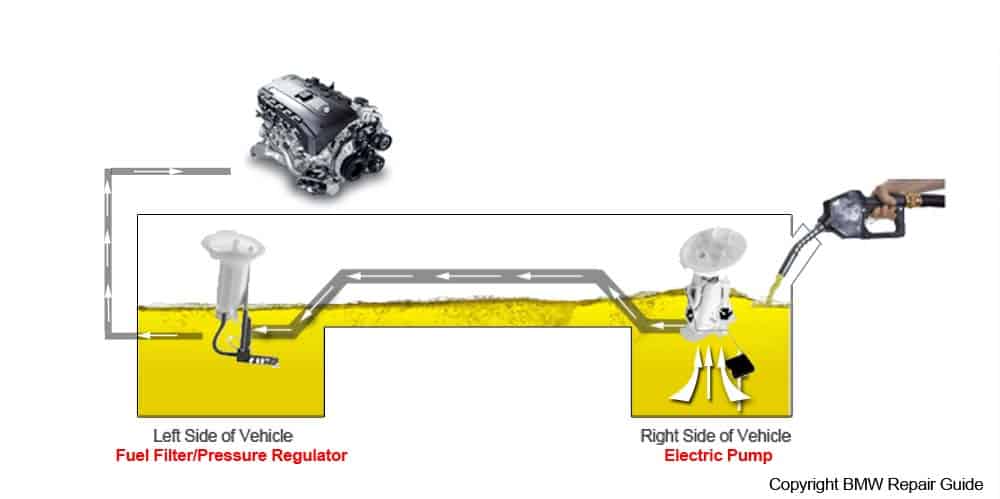
The BMW E90 fuel pump has an average life span of about 120,000 miles. The classic symptoms of a failing fuel pump or filter are hard starts, especially if the car has sat for an extended period of time without being driven. The fuel filter/pressure regulator is especially susceptible to failure if the vehicle has been run for extended periods on contaminated fuel.
The BMW E90 fuel pump and filter/pressure regulator should always be replaced together. Replacing the fuel pump and filter is a very "doable" repair for the home mechanic with average abilities and can prevent a very costly trip to the local repair shop. Fuel pumps and filters for the E90 are readily available and OEM quality replacements are very reasonably priced.
The BMW Repair Guide strongly recommends only using a fuel pump removal tool to loosen the locking rings on the pump and filter units. Trying to remove the locking rings with a hammer and punch IS NOT an acceptable way to remove the rings and can cause the fuel filter to shatter and fall into the gas tank. A fuel pump removal tool is available at any auto parts store, or you can order the same one used in this article from Amazon by clicking here.
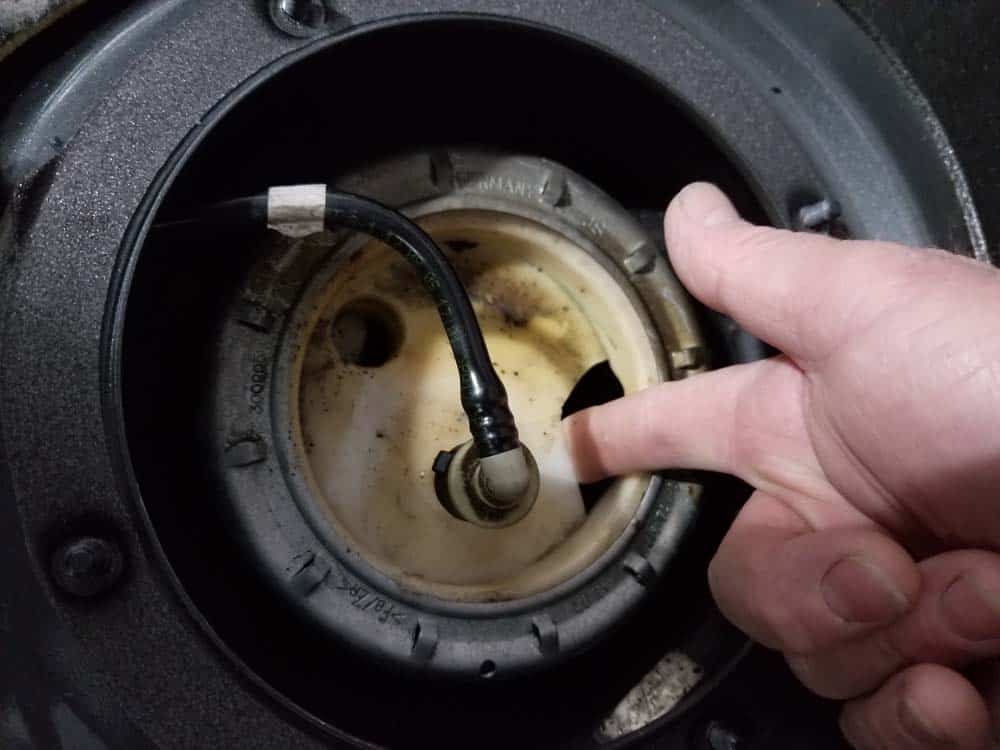


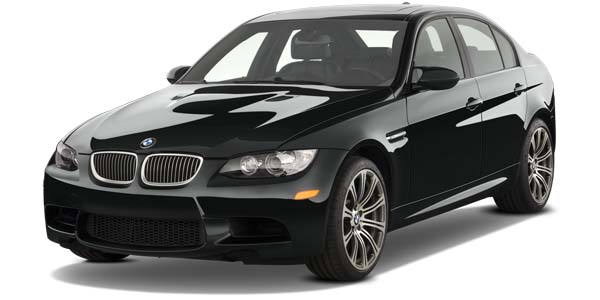
If the video does not appear below, please click here to view
View the video version of this repair.
View the detailed parts diagram for this repair.
Includes detailed part diagrams, part numbers and links to purchase all of the required components needed to complete this repair.
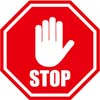
Before starting this repair, you must have the following required parts.
All BMW E9x vehicles (except M3)
If your gas gauge no longer reads, or if your fuel pump has failed, this is the replacement you will need.
All BMW E9x vehicles (except M3)
Fuel filter repair kit located inside fuel tank next to fuel pump. Includes filter with integrated fuel pressure regulator and required o-rings. A clogged fuel filter makes it difficult for your engine to get all the fueling it needs. Filters commonly clog from a deteriorating gas tank, bad fuel, or other debris in the fuel system. A fresh fuel filter addresses many fuel related problems including surging, stalling, cold start issues, and poor performance under a variety of conditions.
Section 1 - Removing the Fuel Pump and Filter
The fuel pump and filter are located under the rear seat in all 2007-2013 3 series cars. They are easily accessible and usually can be replaced in less than an hour. It is very important to note that you must use a fuel pump removal tool (spanner wrench) to loosen the locking rings on the pump and filter. Trying to loosen the locking rings with a hammer and screwdriver can cause the plastic pump and filter to shatter, sending debris into the fuel tank.- Always disconnect the battery before performing a BMW E90 fuel pump replacement.
- Grasp the front of the rear seat and pull it free from the body of the car. Remove the seat from the vehicle.
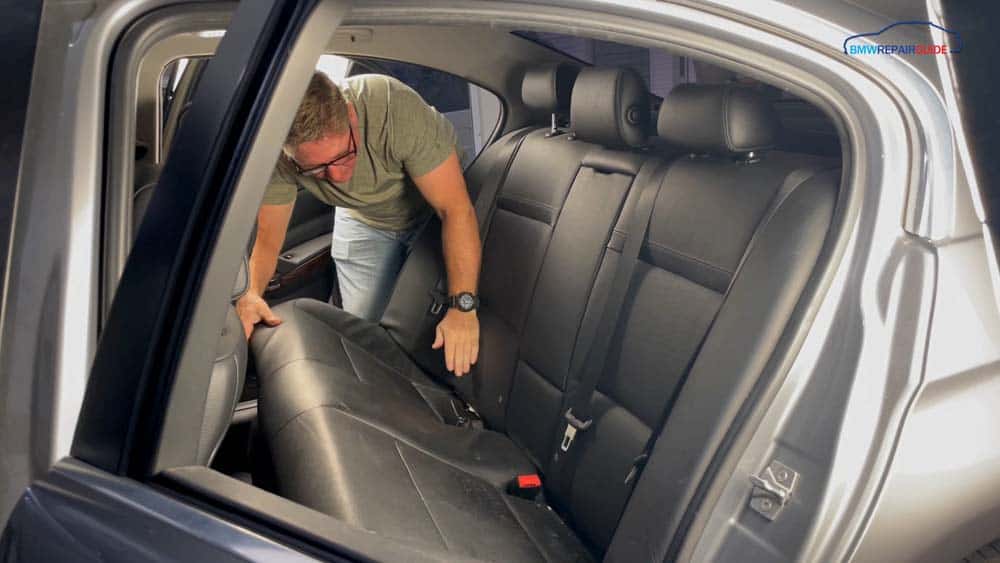
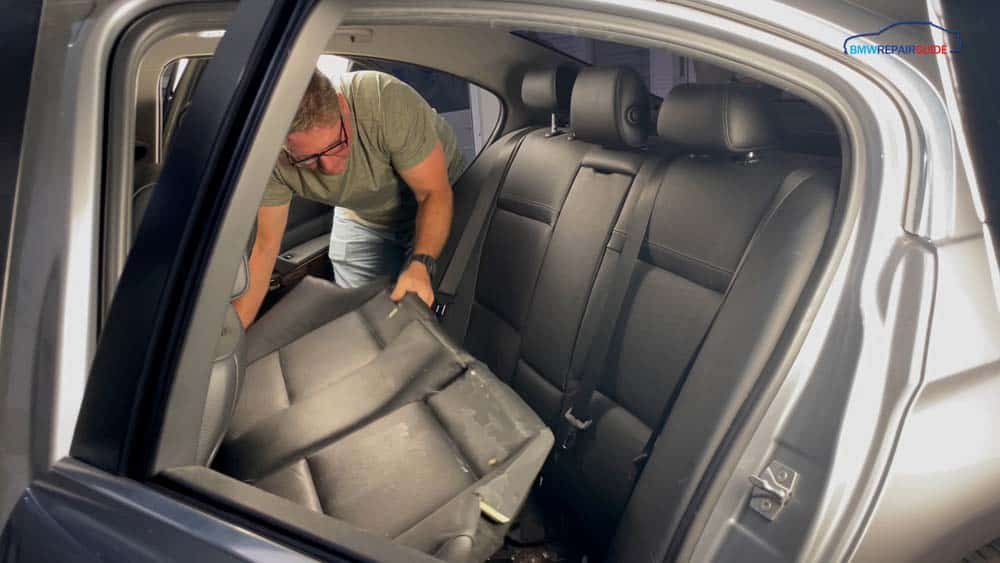
- Fold the sound insulation back out of the work area.
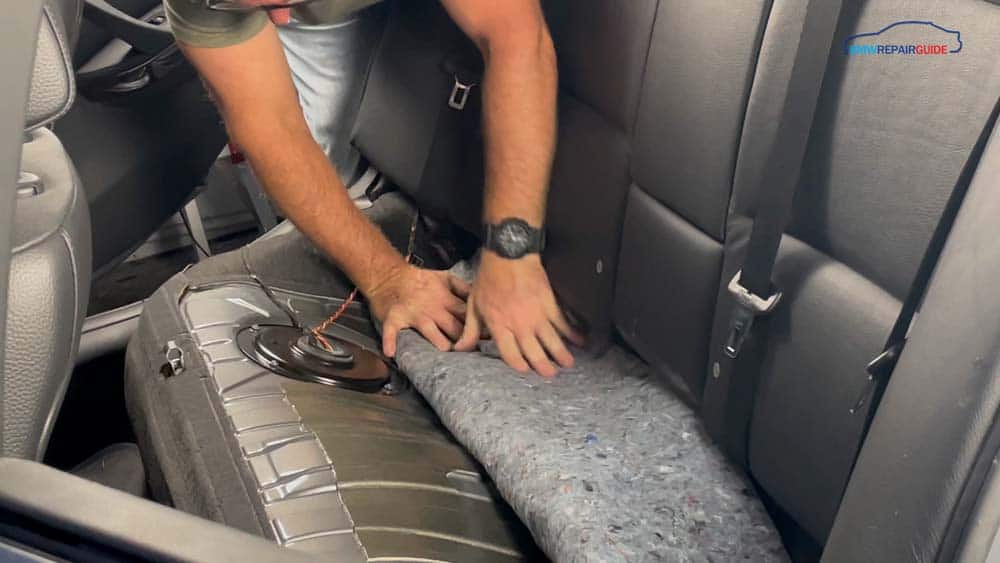
- Locate and identify the fuel pump and fuel filter covers. The fuel pump is on the right side of the vehicle...the filter on the left. Using a 10mm socket wrench, remove the four nuts securing the fuel pump cover. Remove the cover from the fuel pump.
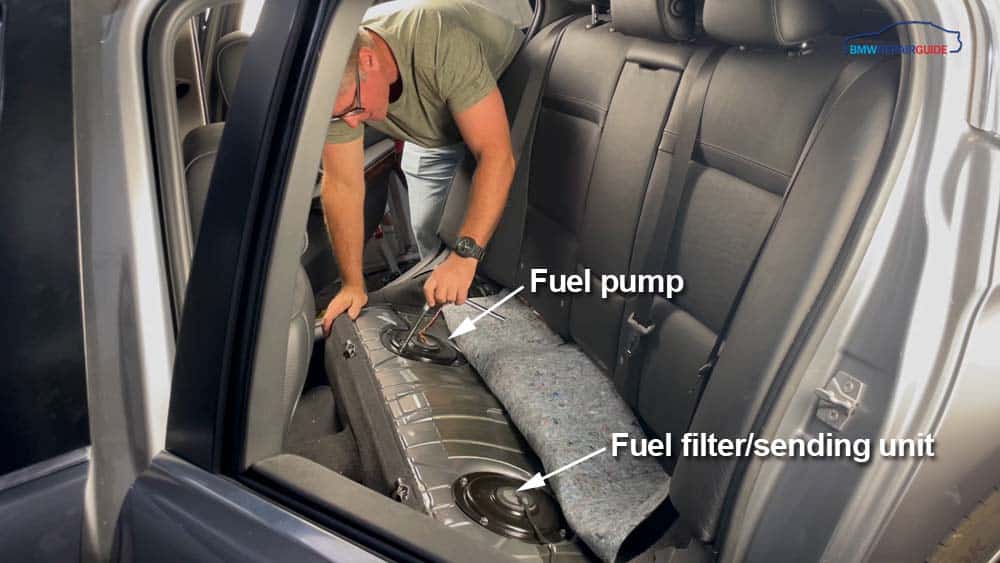
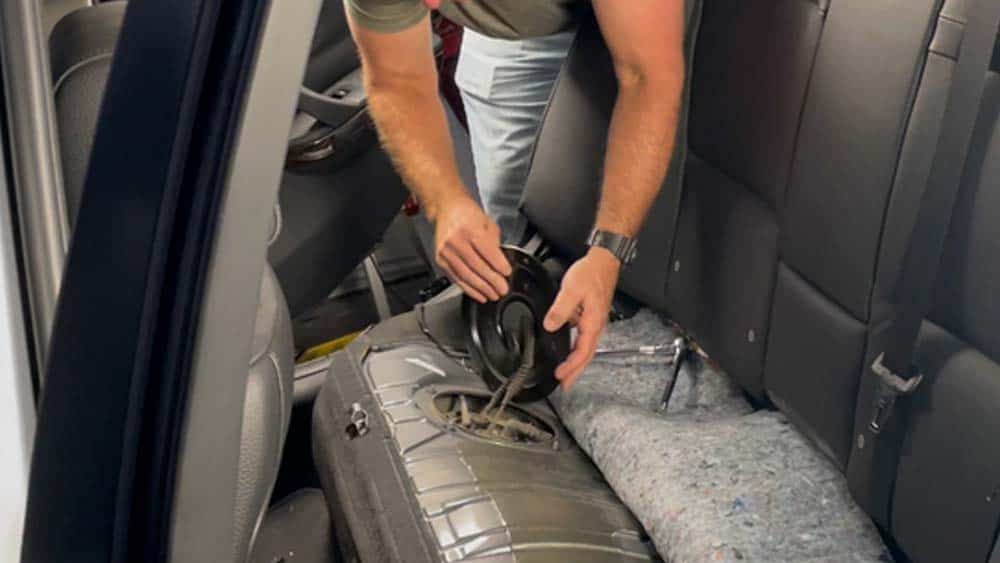
- Move to the left side of the vehicle and remove the cover from the fuel filter/sending unit.
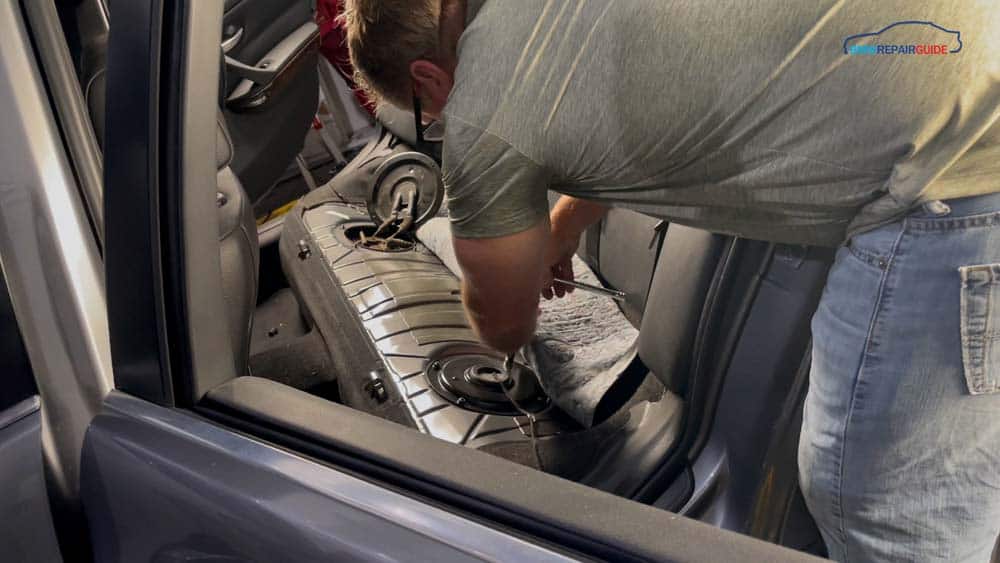
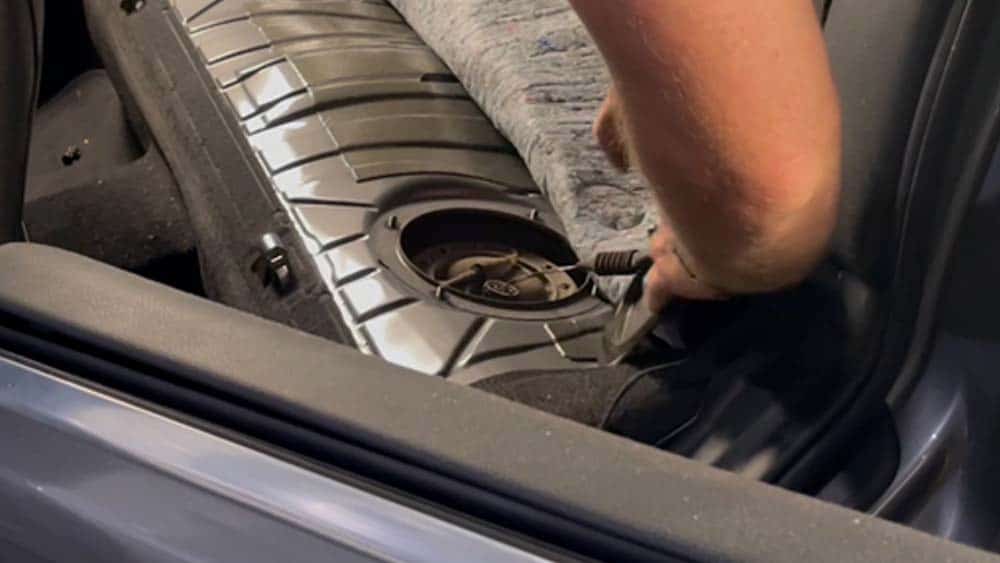
- Move back to the fuel pump and disconnect the two electrical connections by squeezing their locking tabs and pulling them free.
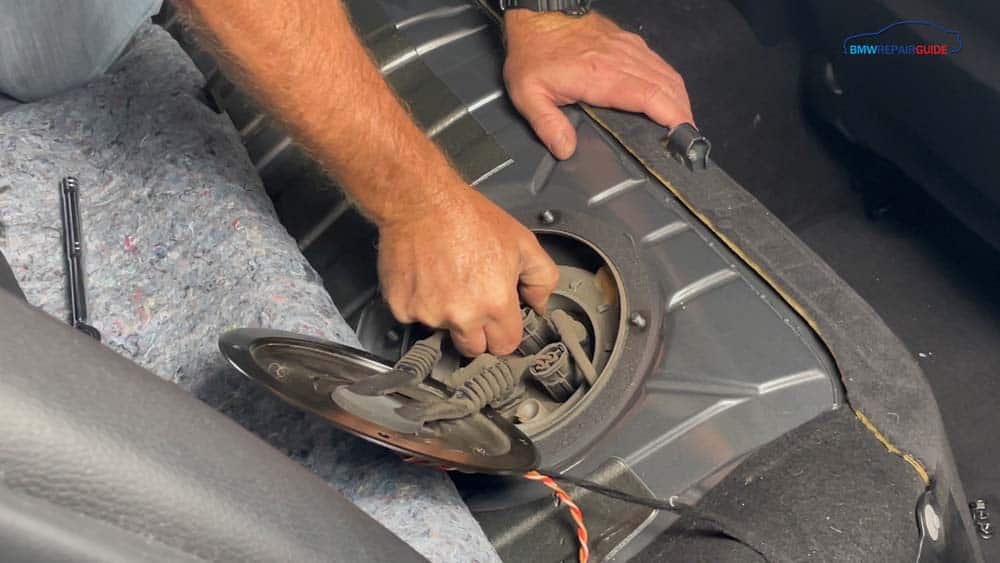
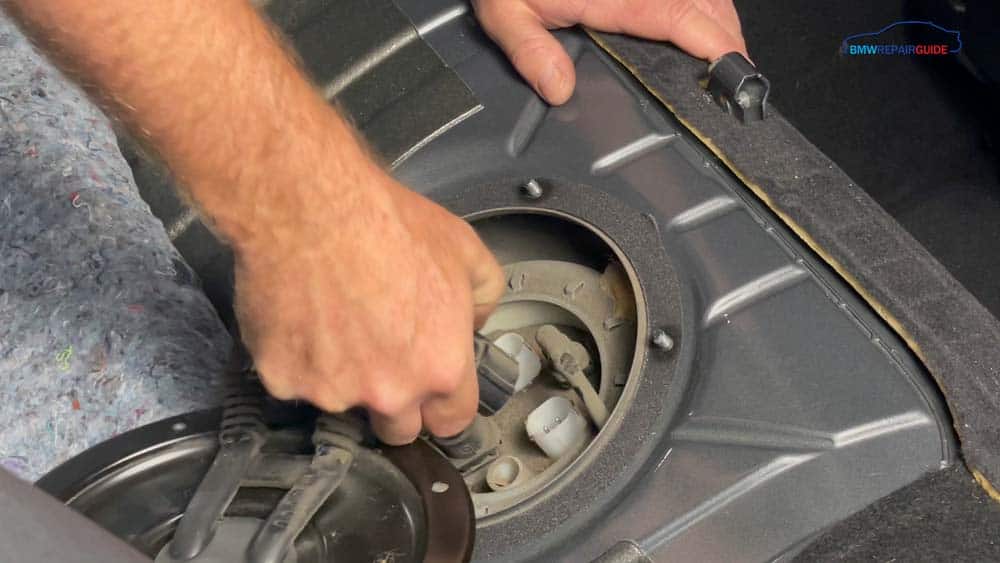
- Using a flat blade screwdriver, gently depress the button release on the plastic fuel vent pipe. With the button depressed, pull the vent pipe free from the pump and tuck it out of the way.
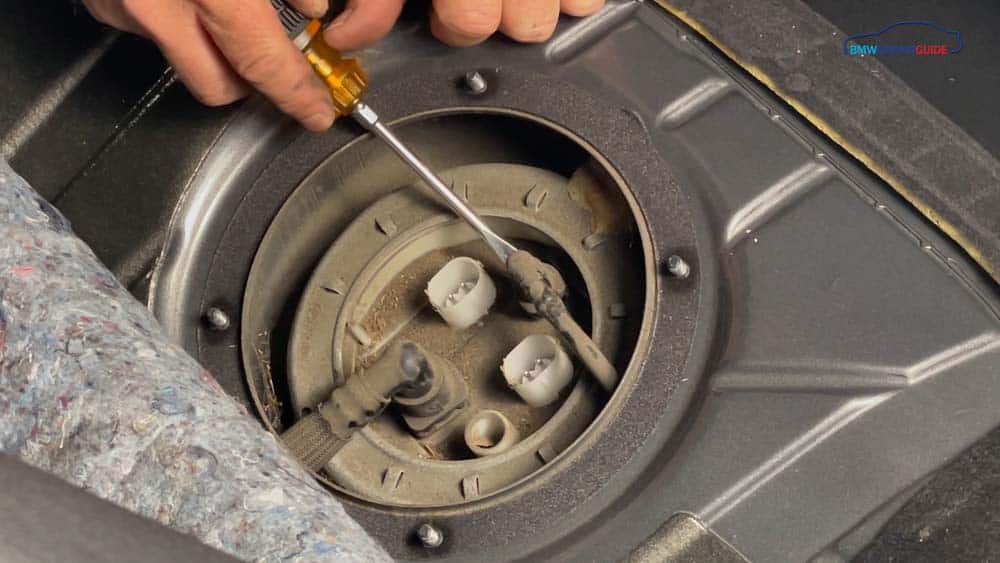
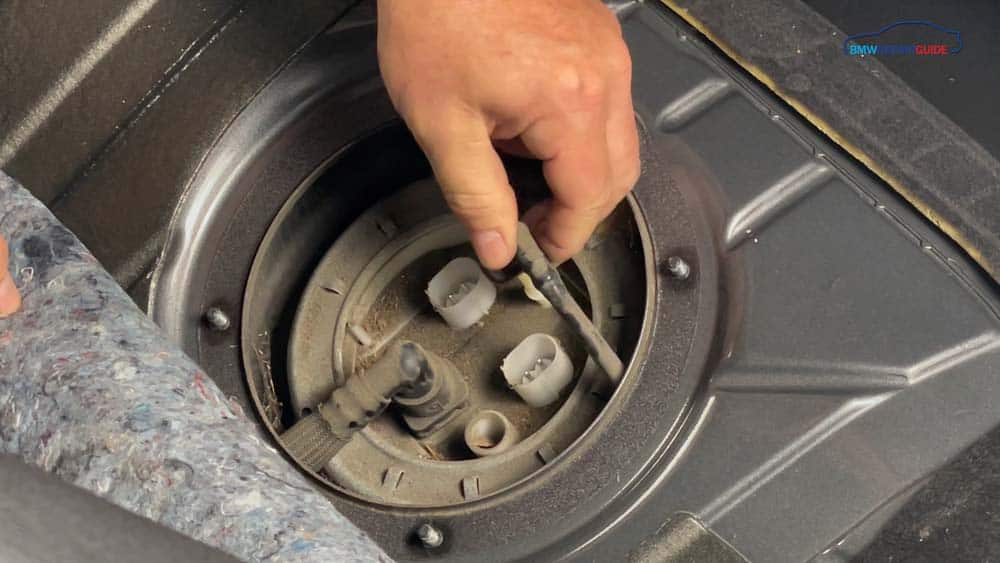
- Depress the release button on the second fuel vent pipe and remove it from the top of the fuel pump. Due to the lack of clearance, we found it was easier to depress this release with a metal pick as shown below.
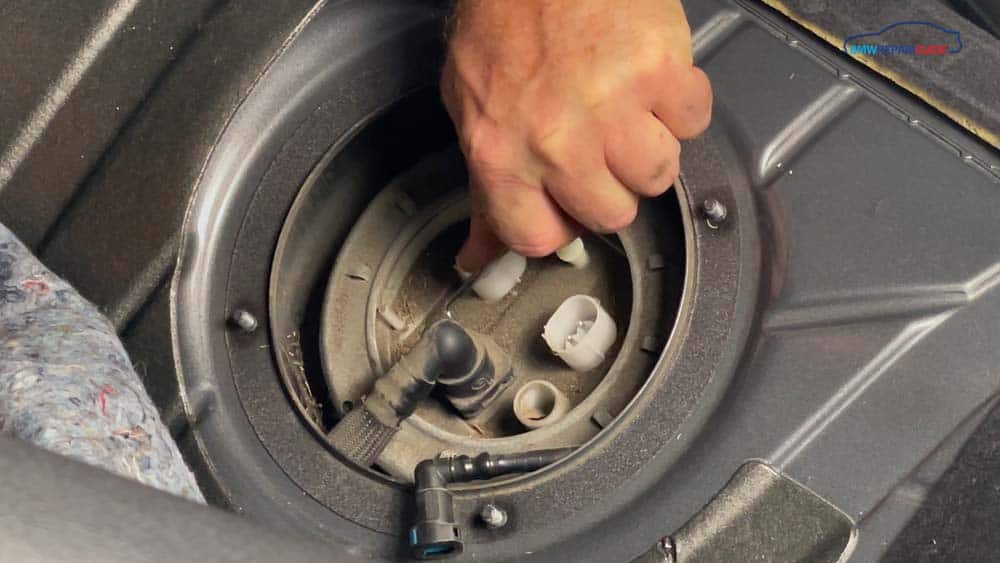
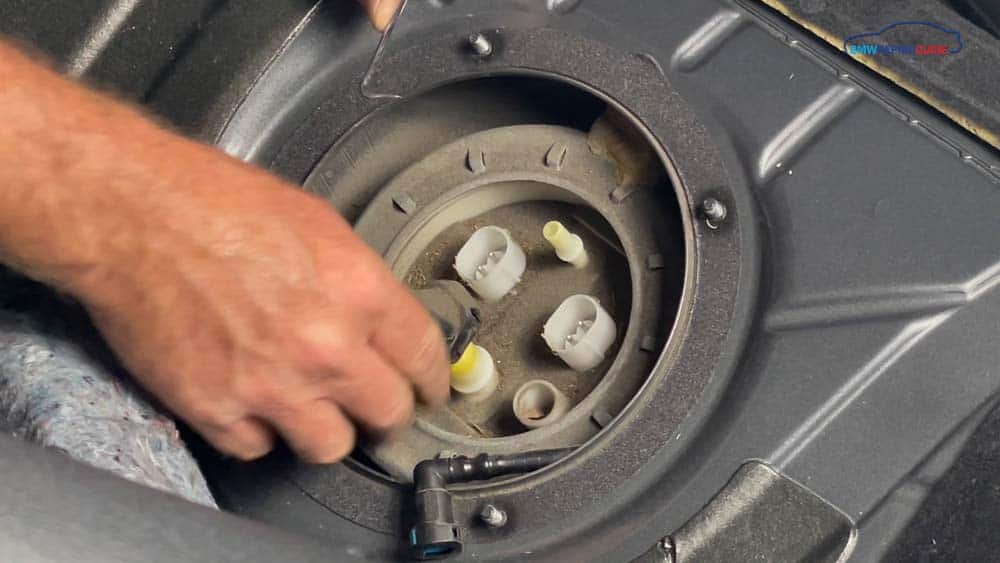
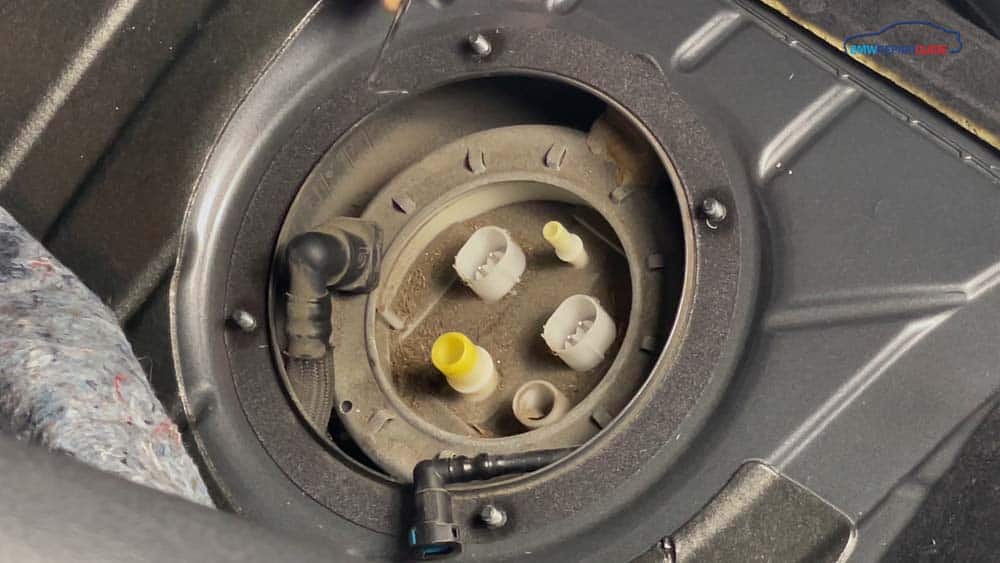
- Use a fuel pump removal tool to loosen the locking ring on the fuel pump. USE PATIENCE. It's not uncommon for the locking rings to be very stubborn to turn. Once the ring is loose, use your hands to finish turning it off of the fuel pump. Remove the locking ring from the pump.
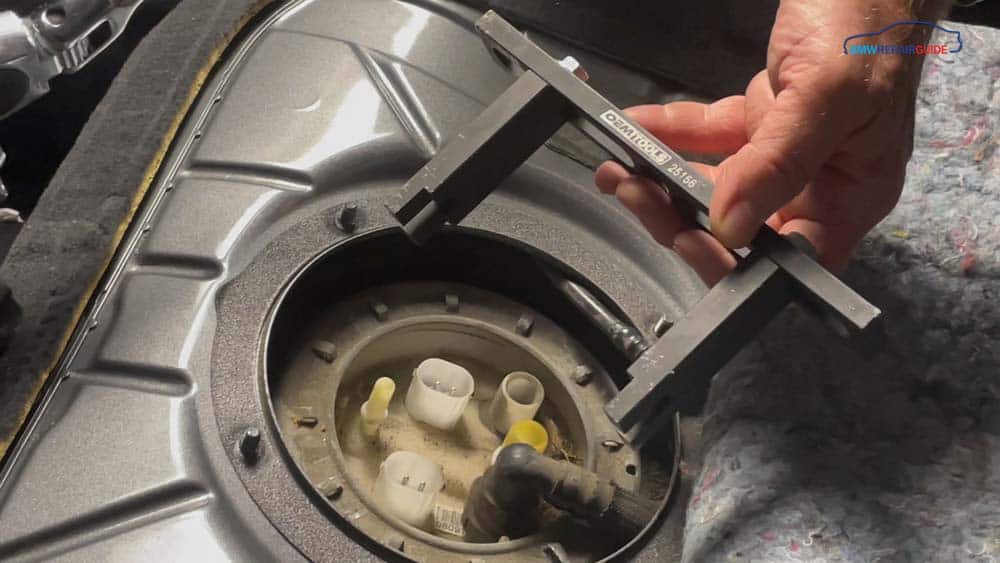
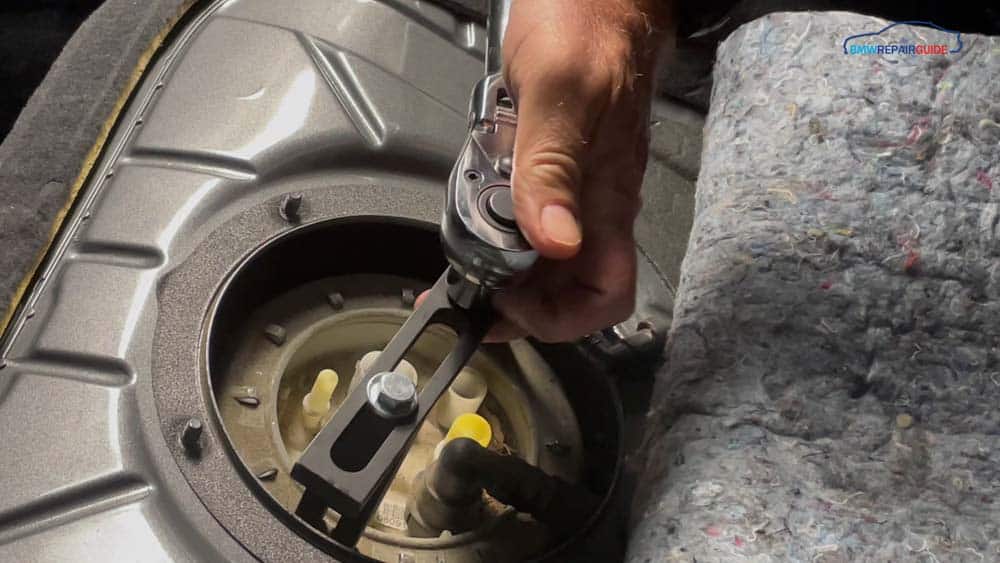
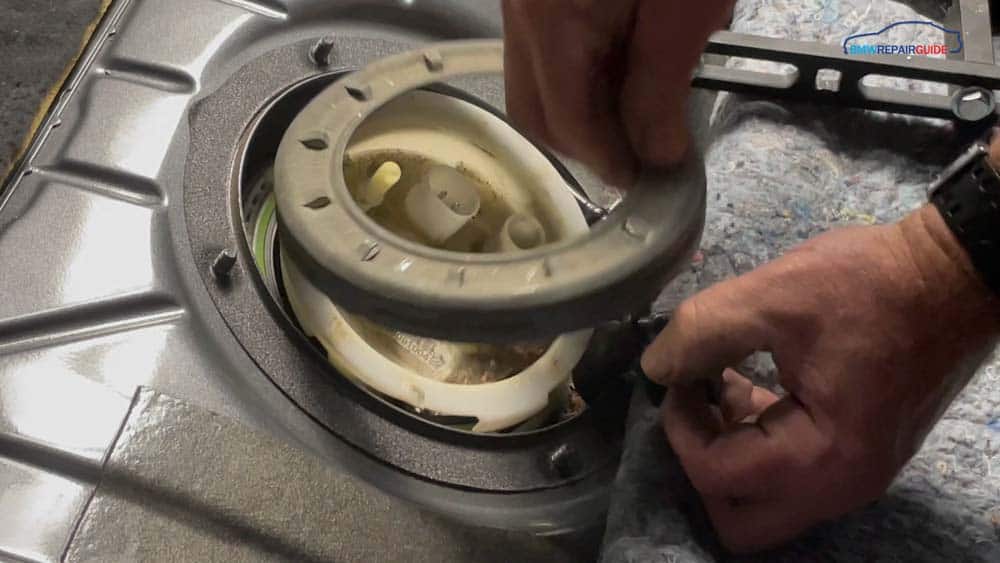
- Grasp the fuel pump and pull it up. Use a flat blade screwdriver or metal pick to depress the release button on the first fuel line. Pull it loose from the bottom of the fuel pump.
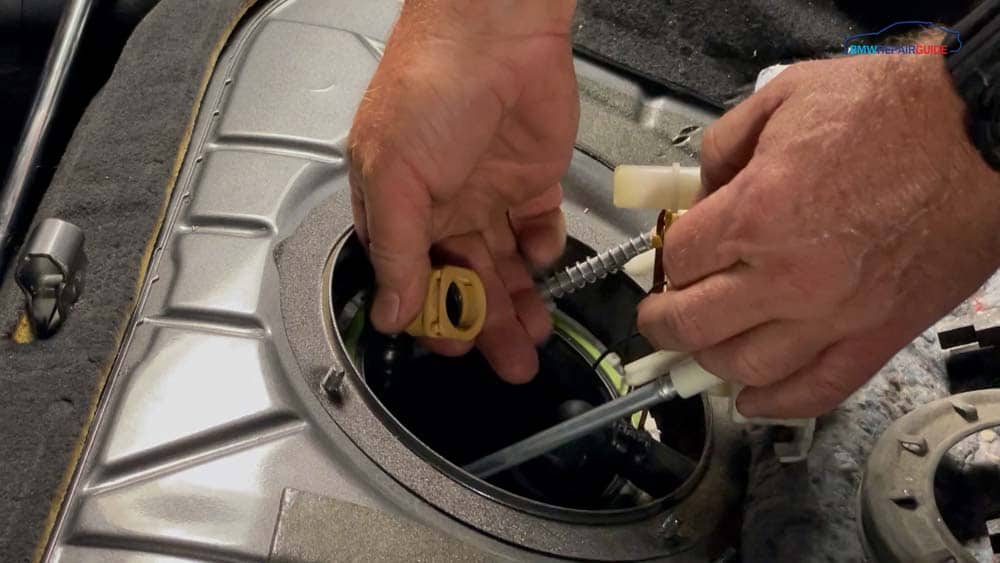
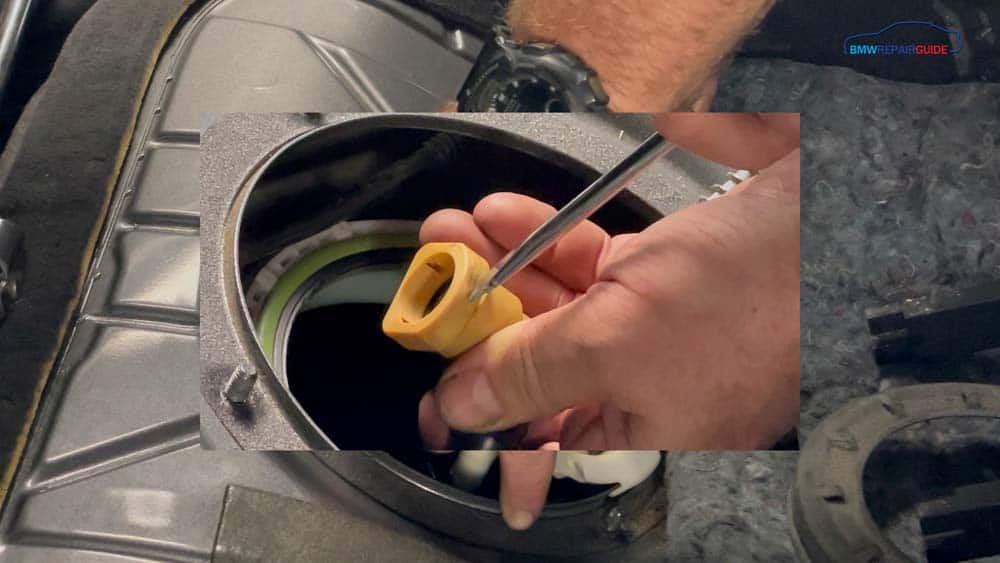
- Repeat on the second fuel line as shown below.
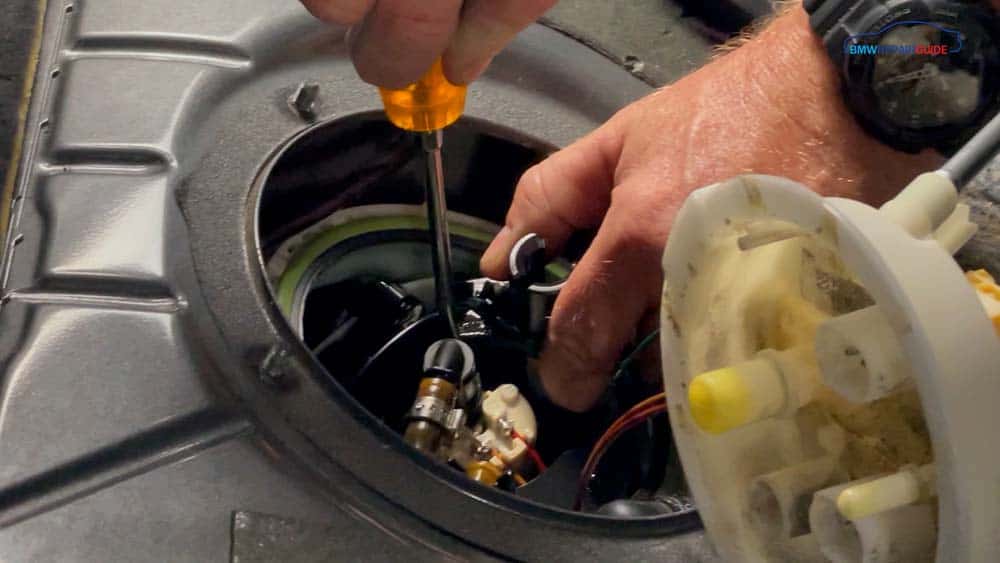
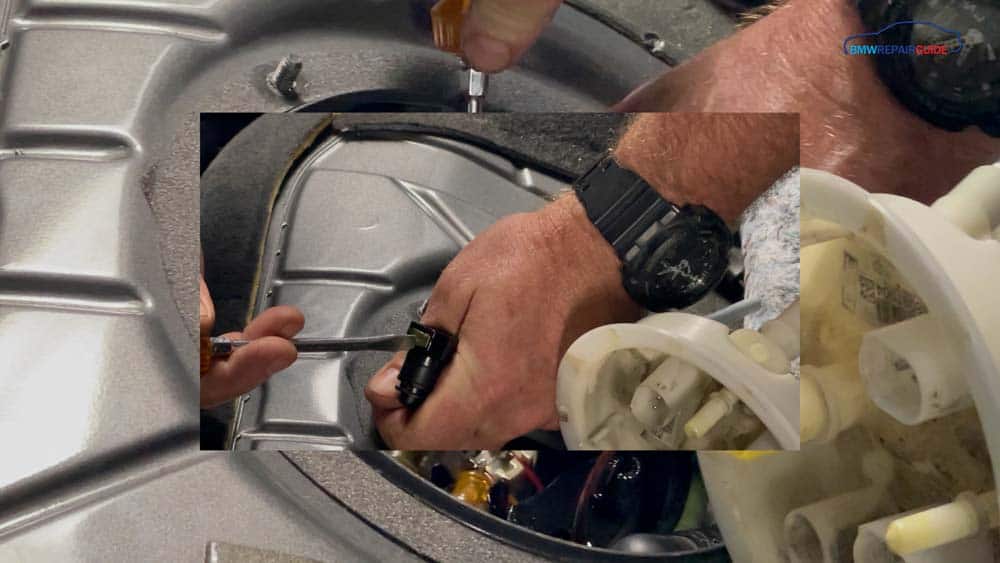
- Grasp the fuel pump and remove it from the tank.
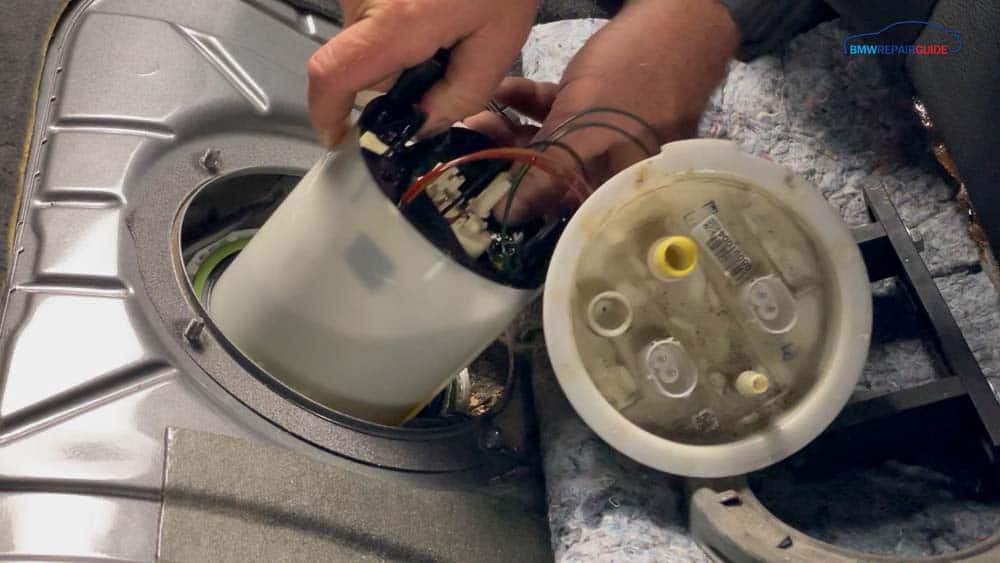
- Move to the fuel filter. Remove the fuel line by pulling its locking collar back and pulling it free from the top of the filter.
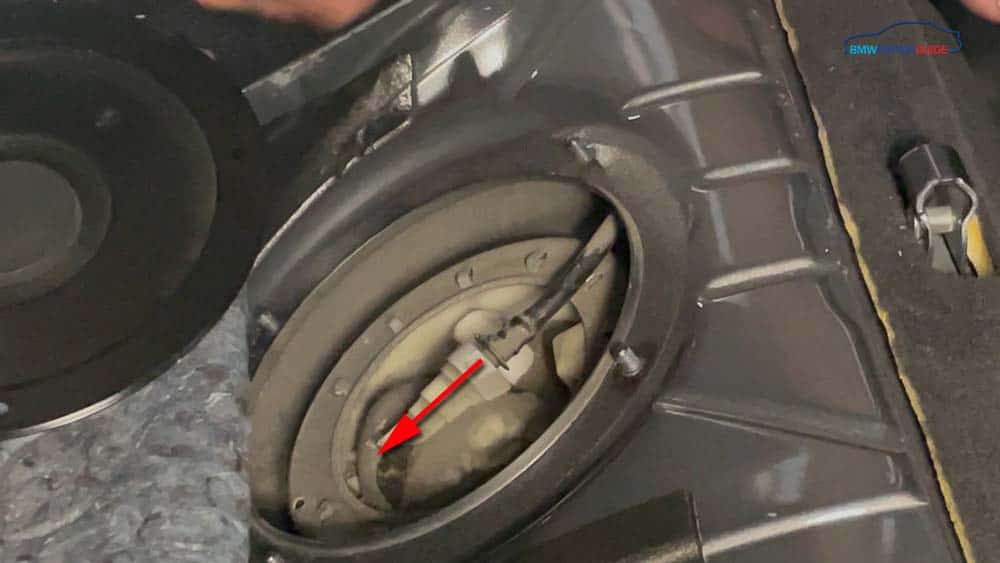
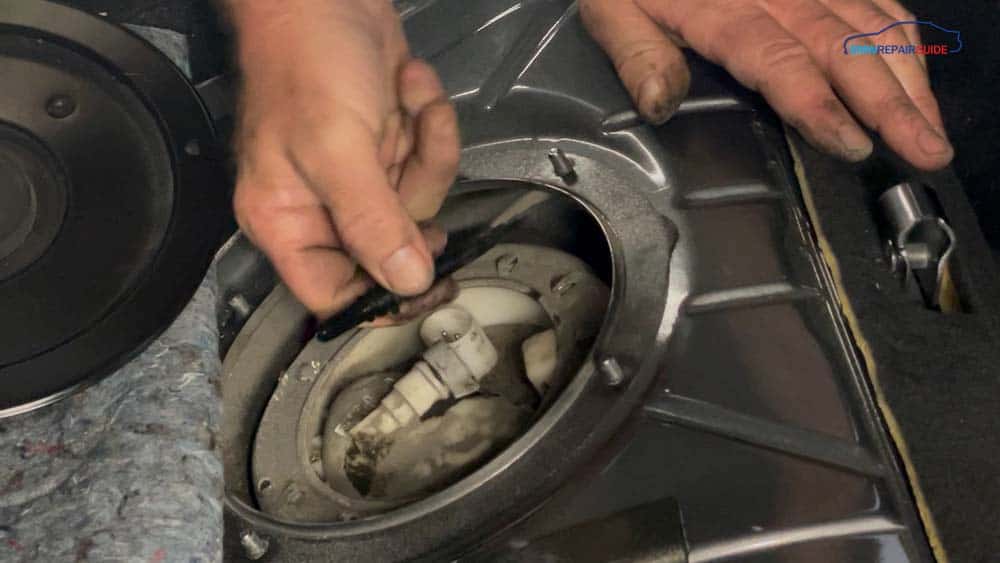
- Remove the locking ring from the fuel filter.
- Grasp the fuel filter and carefully pull up....slowly extracting the fuel feed lines from the tank. Remove the fuel filter from the vehicle.
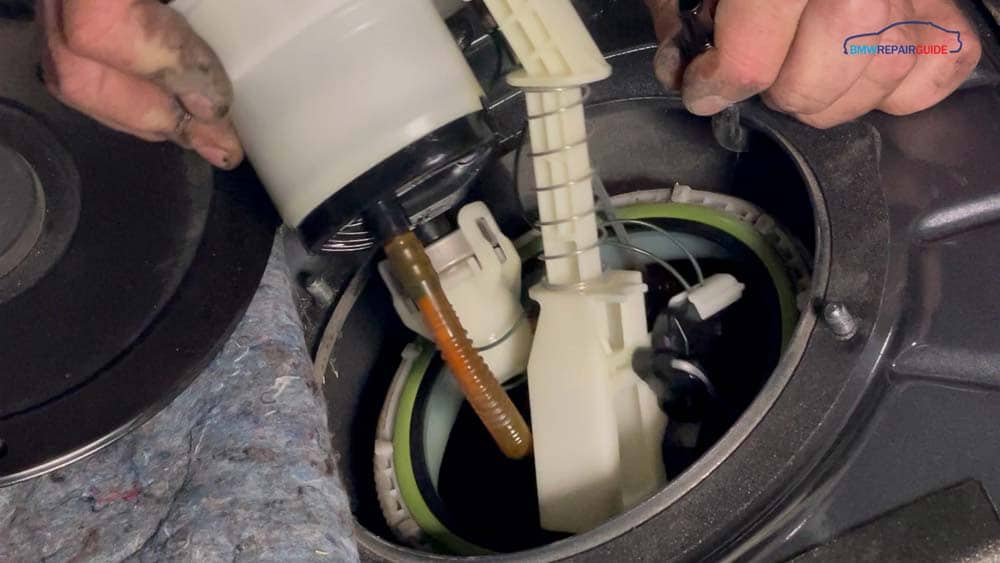
Section 2 - Installing the New BMW E90 Fuel Pump and Filter
Installing the new pump and filter is very straightforward...it is basically the above steps in reverse. It is important to note that the feed lines from the filter to the pump must be correctly installed in order for the system to work correctly. We give detailed photos below of how they are to be installed. Please also refer to our YouTube video for more detailed information on installation.- The new fuel pump and fuel filter come with new sealing gaskets. The sealing gasket should always be replaced to avoid gas fumes from leaking into the vehicle.
- Use a metal pick to remove the old sealing gaskets on the fuel pump and fuel filter. Install the new gaskets pressing them gently into their mounting grooves.
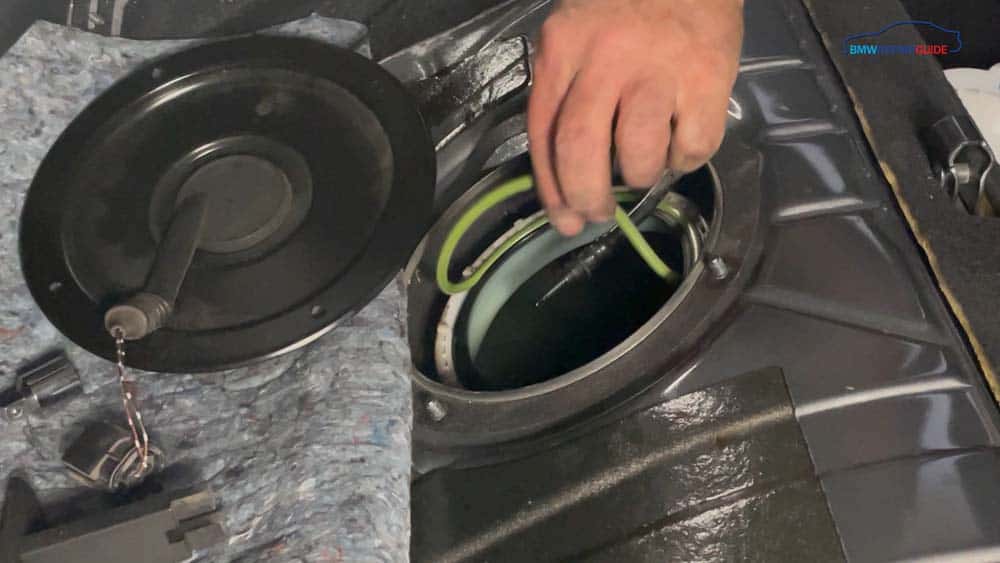
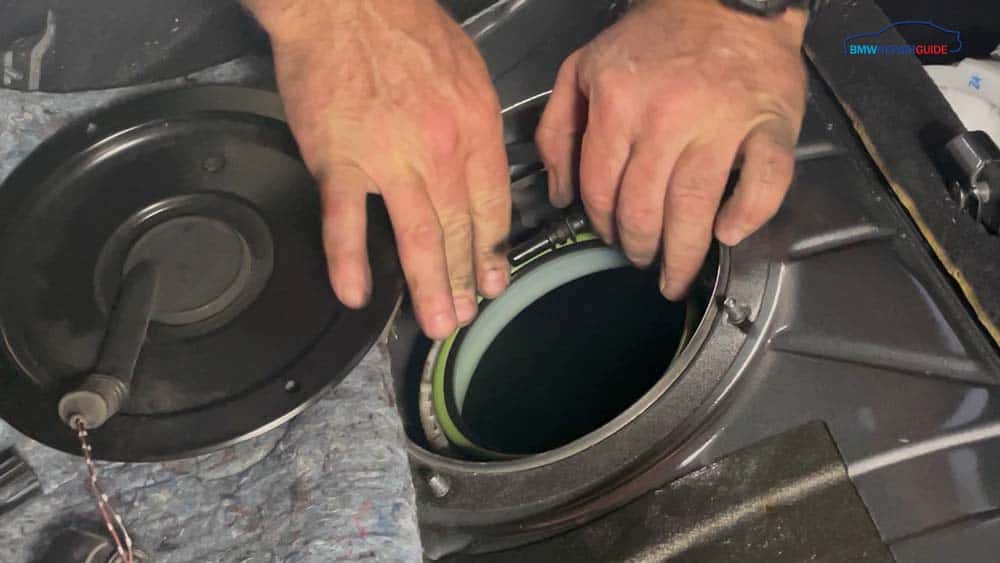
- Install the new fuel filter by carefully feeding the fuel lines to the right side of the tank. Stick your arm into the tank and push the fuel lines through under the seat. Take your time, being sure that all four fuel lines feed through correctly.
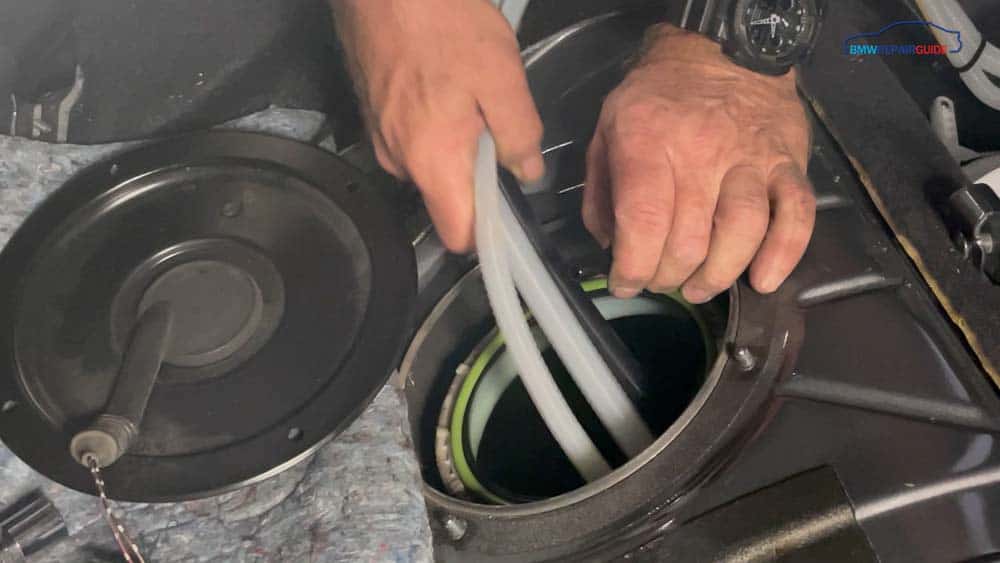
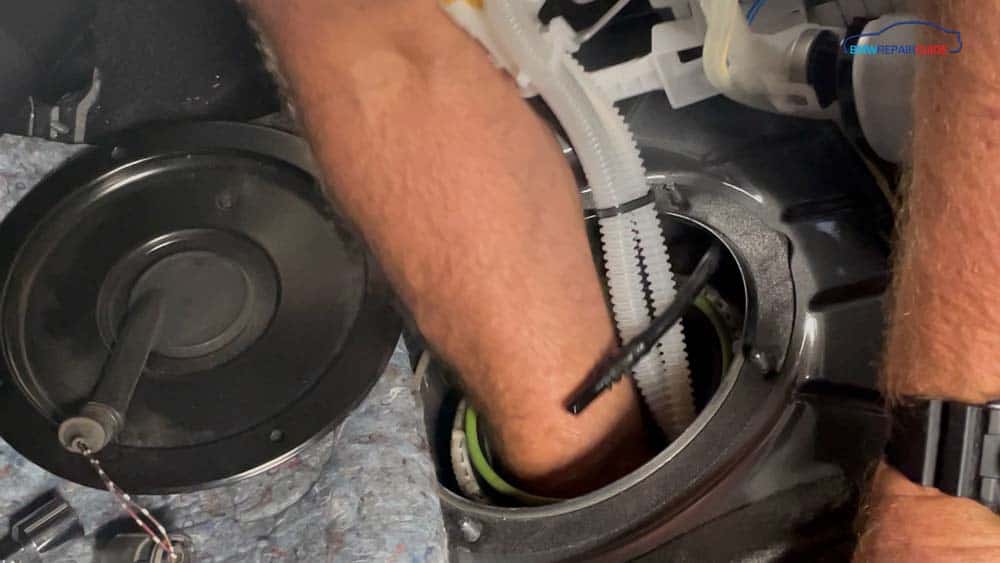
- Put the fuel filter into the tank. Make sure the tab on the fuel filter fits into the slot in the tank. If you do not line up the tab correctly on the filter with the tank, you WILL NOT be able to get the locking ring back on.
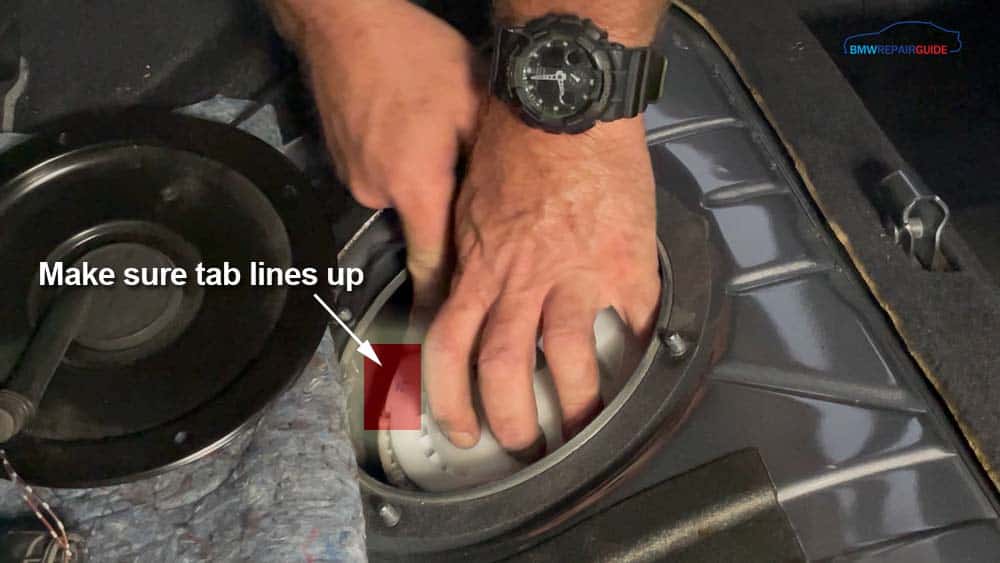
- Install the locking ring and tighten it until snug. DO NOT OVERTIGHTEN.
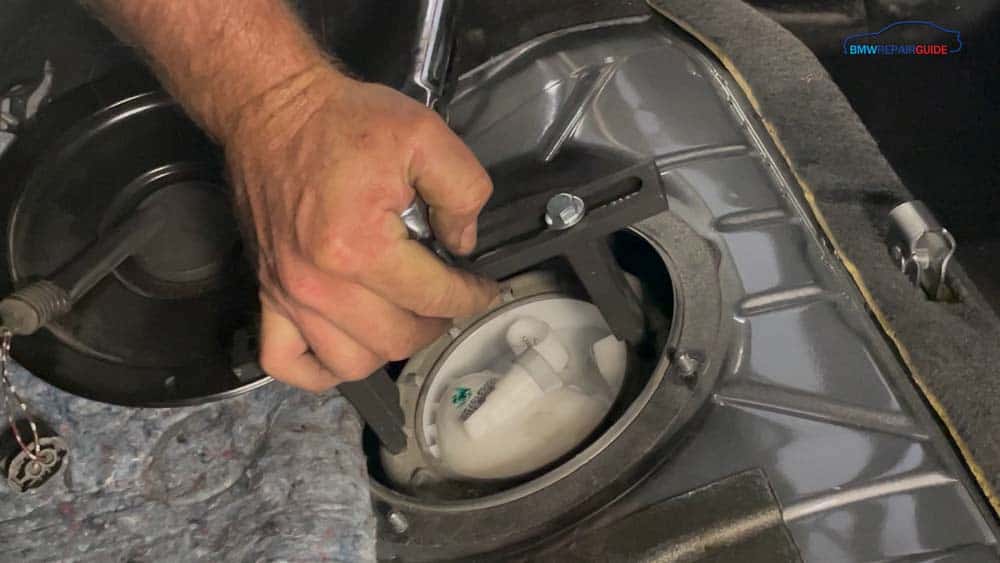
- Install the fuel line back onto the fuel filter and push until it clicks into place.
- Do not replace the fuel filter cover yet. This will be done after you start the car and test for leaks at the end of this section.
- Install the fuel pump back into the tank.
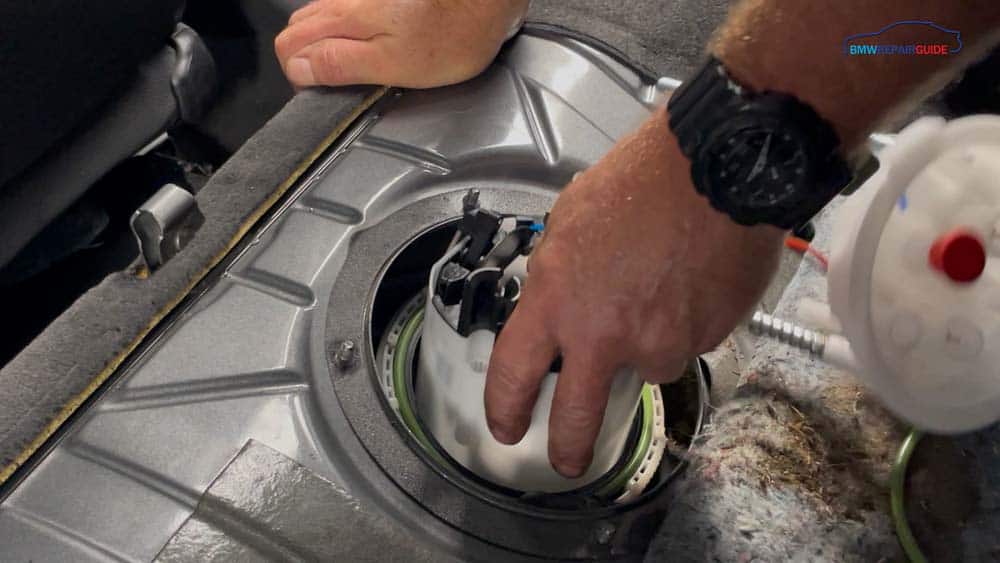
- Install the fuel lines from the fuel filter back into the pump exactly as shown in the following image.
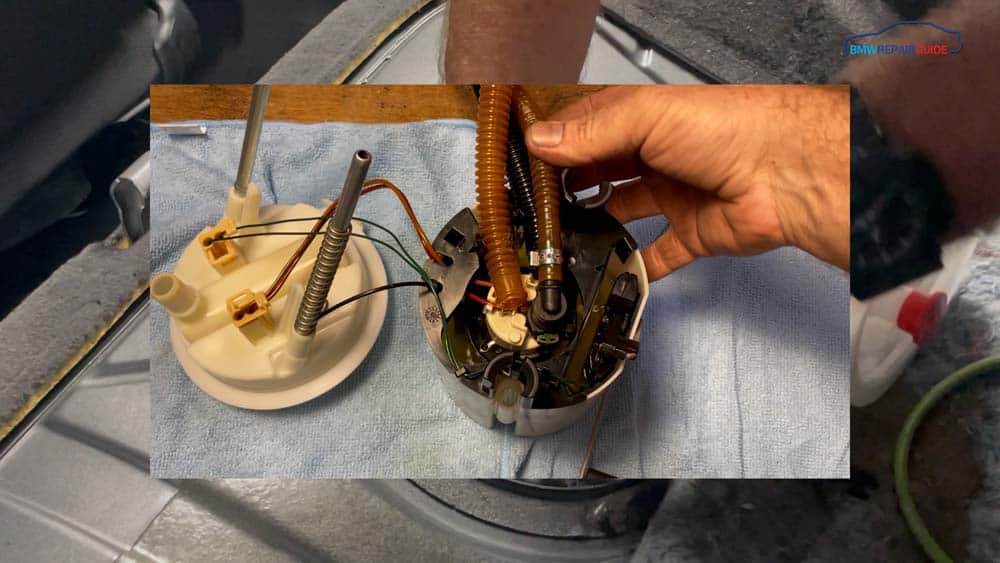
- Make sure the tab on the fuel pump lines up with the notch in the tank. Install the locking ring and tighten it until snug.
- Install the fuel vent lines.
- Plug the electrical connectors back in.
- Start the vehicle and confirm there are no leaks and the pumps are running correctly. You should be able to hear a humming sound coming from both the pump and fuel filter/sending unit when the engine is running.
- Replace the covers on the fuel pump and filter and reinstall the rear seat.
BMW E90 Fuel Pump Replacement Finished

